13 Street Photography Ideas To Get You Inspired
Last Updated on
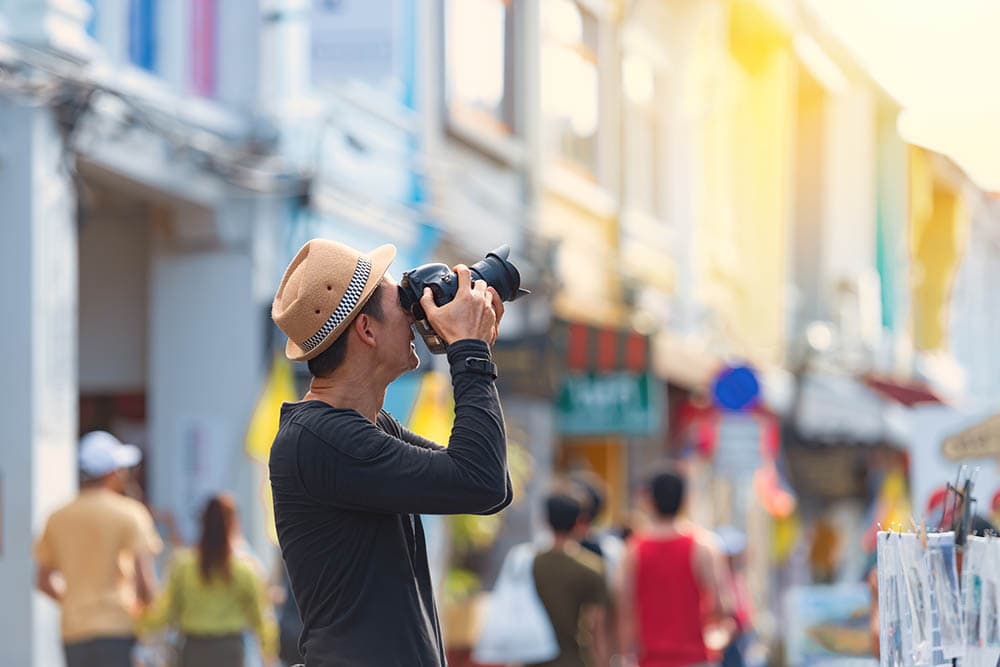
It can be challenging to come up with cool street photography ideas, but the secret is to try to get out of your comfort zone and think outside the box.
Today, we’re going to share a few ideas that have inspired us in the past. Frankly speaking, we don’t know if they’ll work for you, but you should at least give them a try. You might not love them, but your audience will. And that’s what matters right? It’s all about putting a smile on your audience’s face.

The Top 13 Street Photography Ideas to Get You Inspired
1. Black and White

Most digital cameras come with a feature that offers the option of a black and white jpeg. Some photographers don’t like exploring this genre, but we love it, as it adds a sense of timelessness to your photos. Matter of fact, when done right, it will be virtually impossible for your audience to figure out when exactly the picture was taken.
That’s not the only benefit that you get to enjoy here. Black and white also liberates photographers who don’t wish to focus on color. You could instead find the right composition, texture, contrast, and even tone.
2. Aspect ratio

The composition rules in photography are to guide the photographer and ensure they remember to highlight the subject about the different elements of a photo. However, those rules have to change, if the goal is to (let’s assume) enhance the cinematic aspect of photography.
We’re not saying you should take the photos, and then crop them during post-processing. We’re talking about recalibrating the settings of the camera, to shoot in a different ratio. Like, say, applying a panoramic ratio to a landscape creation, or a medium ratio on a square format.
3. High contrast

Tonal variation and contrast are the reasons why we’re able to gauge the shape of an item or subject. Therefore, if you’re looking for a way to compel your audience to look at a photo from different perspectives, or to add a dramatic effect to the shot, go for high contrast.
But to achieve this, you have to know how to work with your light. Seeing as this is a street photography session, our light source will be the sun. And it has to be at its zenith because that’s when the scene will look more contrasted.
Alternatively, you can work very early in the morning or later on during the day, at a time when shadows are lengthened.
4. Night photography
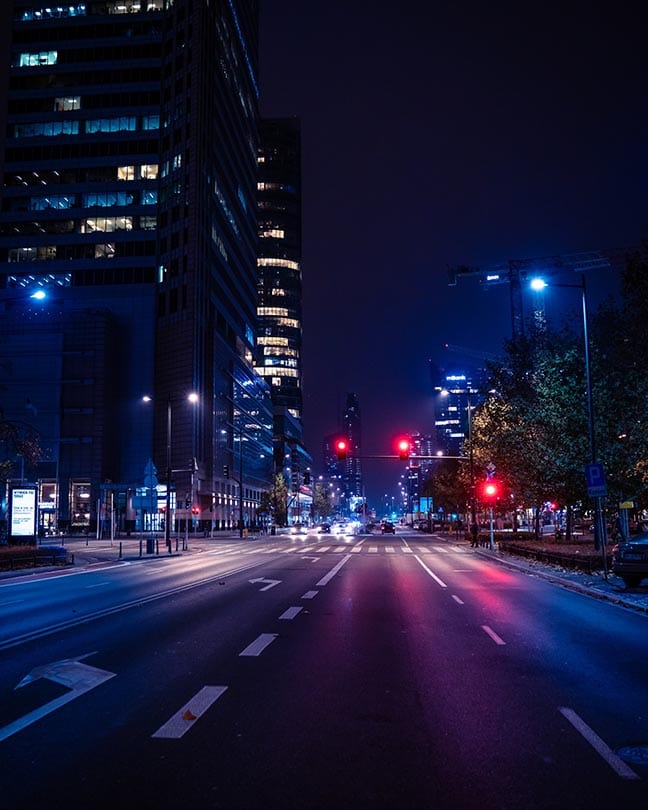
You must have realized by now how different the streets look under the cover of darkness. There’s something gothic about it. It often brings out a totally different element in photography, one that can’t be easily duplicated without the right applications.
To appreciate the full effect, you have to wait for the restaurants, bars, and stores to switch on their lights. If your neighborhood doesn’t have any one of those social amenities, work with the streetlights. It’s no secret that artificial light usually has the ability to help us relay information and emotion through an image.
5. Reflection photography

Some photographers prefer using the phrase “mirror photography.” And it’s basically the utilization of reflective surfaces to produce an artistic echo of a subject or even a scene. It’s the type of photography that we like to explore on rainy days since that’s when you’ll easily find puddles everywhere.
A composition technique that can be applied here is reflectional or mirror symmetry. It will make your images look as though they’ve been split into two, with one half acting as the mirror image. Just don’t forget to take into account the three laws of reflection, while working your shots.
6. Keep it simple
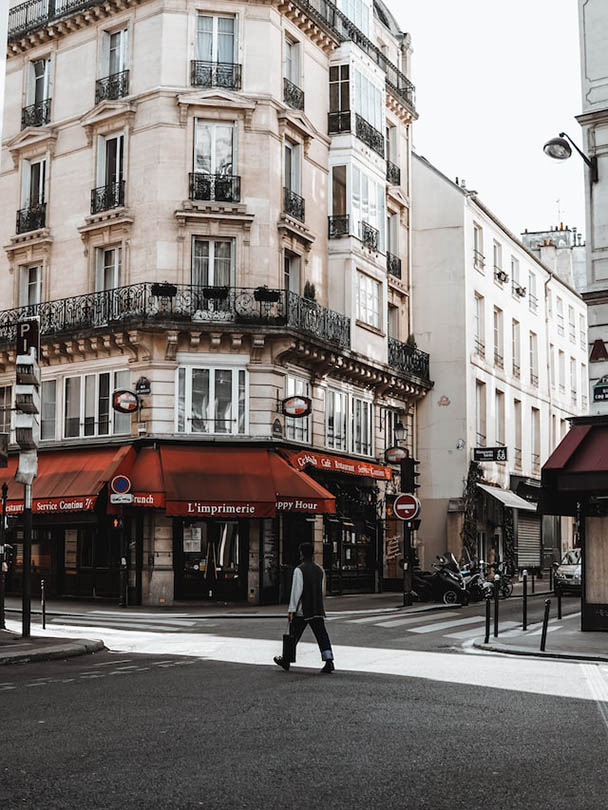
While packing your equipment, only take one lens and leave the rest behind. There are so many advantages of only using a single lens while you’re out there. For starters, it will make certain that you familiarize yourself with one focal length. Secondly, you’ll be compelled to rely on your creative juices just to take crispy images. And lastly, the shots will not only be consistent but also cohesive.
7. Slow shutter speeds
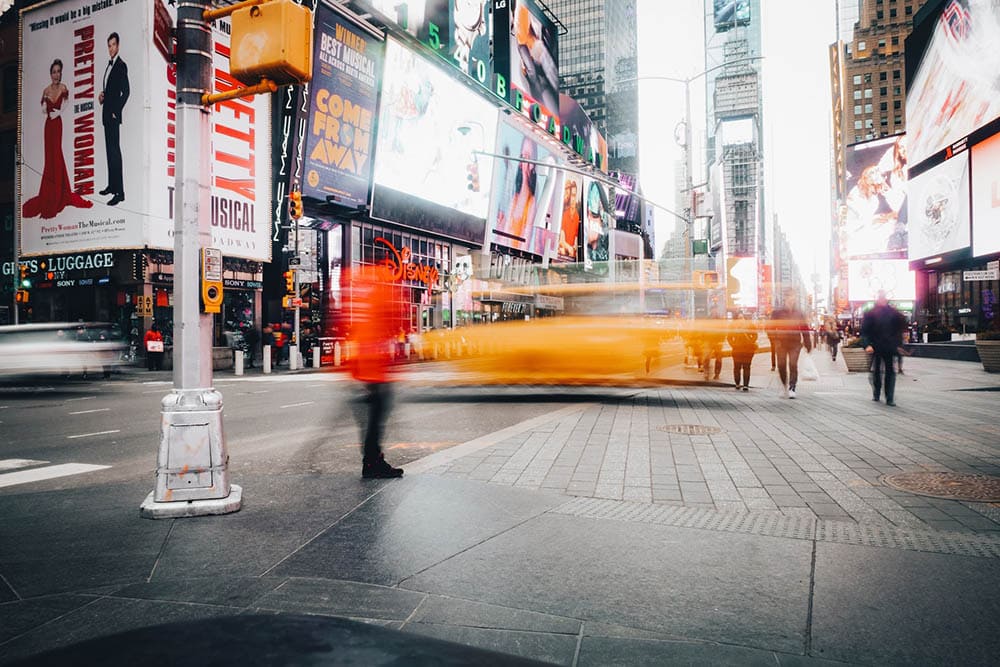
Slow shutter speed shooting is really not a complex concept. It’s all about ensuring the camera’s shutter stays open for a considerable amount of time, to expose the sensor to more light. This photography technique is ideal for low light conditions or during nighttime.
Every photographer has their own preference when it comes to taking these kinds of shots, but we prefer taking street photos at 1/500 sec shutter speed. From our experience, that’s enough time is sufficient to guarantee the images don’t come out blurry. Then again, if you think about it, blur is not necessarily a bad thing. It can be an artistic effect on its own, as we’ve seen with panning.
If you know what you’re doing, and you understand the inner workings of your camera, you could create a magnificent impression of movement, thereby detaching your subjects from their surroundings.
8. Street portraits

Truth be told, anyone who considers themselves introverted is not cut out for this type of gig. But the good thing about photography is that it pushes you out of your comfort zone and into realms that you never even thought you could explore. You’ll undoubtedly face a lot of rejection while conducting these sessions, but you have to find a way to keep your social anxiety in check.
Overthinking and running different scenarios in your head will only worsen the situation. So what we normally do, is to just jump into those waters, and pray we don’t sink. There are two ways of approaching this: Ask for permission before taking the picture or take the shot and then ask for it.
We prefer taking the shot first because more often than not the subjects end up loving the picture so much that they find it hard to say no.
9. Urban Landscape shoots

You don’t have to include people in every photo you take just because it’s all about street photography after all. There’s the other aspect of urban landscapes that also define this genre. Good thing is, with this kind of photography, you’ll be able to work on your composition with ease, utilize leading lines, and include different buildings as the primary subjects.
And seeing as we won’t be including people, you’re allowed to set up your equipment anywhere, and shoot at long shutter speeds. If you’ll be going for soft or ethereal vibes, you’ll have to consider wide apertures. The restaurant lights and the streetlamps will provide sufficient lighting if it’s a night shoot.
10. Silhouettes
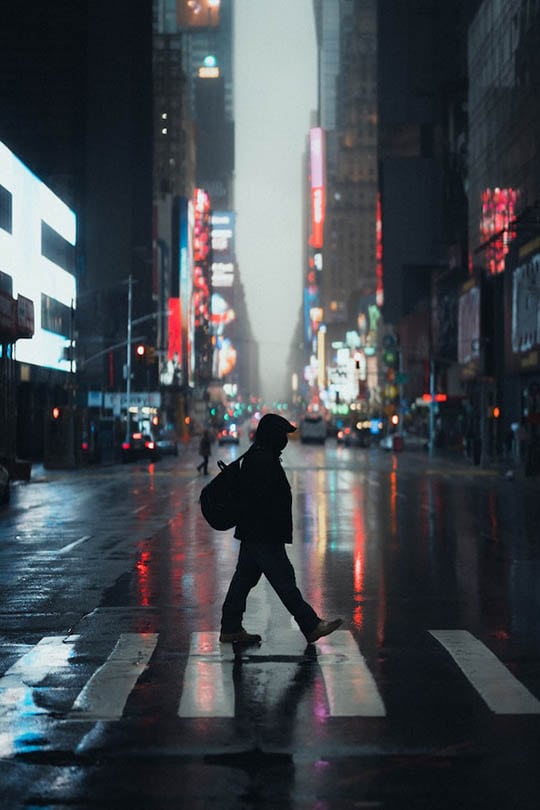
In our world, there’s no photography conversation that you’ll walk into and miss someone talking about silhouettes. They are the best, as they teach you how to capture powerful images defined by extreme contrast between shadows and highlights.
To take a good silhouette, you have to ensure your background is clean. Anything that takes the focus away from your prime subject should be considered noise, and therefore, eliminated. For the highlights, you could use the neon shop lights, restaurant lamps, or the sun.
11. Capture interactions

Every genre of photography has an element that’s considered its fundamental cornerstone. And in the case of street photography, it’s the people interacting. If you can find a bunch of people or even two people having a good time, you’ll succeed in increasing interest in your image.
They don’t even have to be high-profile individuals—just the average passerby makes for interesting images. Subjects that are going about their daily business without any care in the world. If finding such a subject is proving to be difficult, apply the fishing technique—set up your tripod, ready your equipment, and wait for the perfect subject to enter your frame.
12. Shoot in the rain
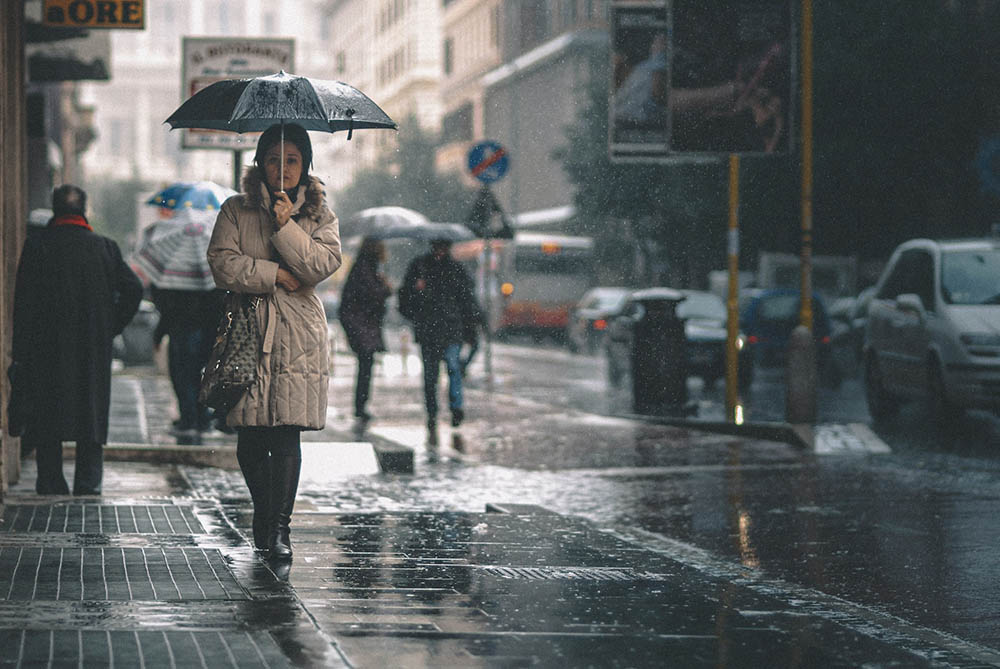
As we said before, street photography is all about getting out there and doing what you wouldn’t do on a normal day. And shooting while it’s raining, is not something that falls in the “normal” bracket.
There’s a reason why people sleep more when it rains. It’s because the sound that’s usually produced by those droplets compels the human brain to produce alpha waves that make us feel relaxed. Capturing unique moments in the rain makes for some great photographs!
13. Triptych

We talked about so many things that characterize photography, but what we almost forgot to talk about is the aspect of storytelling. As a photographer, you have to know how to sequence your images in a fashion that allows them to tell a captivating story. That’s basically what a triptych is—multiple images laid side by side, to create a larger image.
Don’t worry if you’ve never tried it before. Just start with two to three photos, and move on from there. The secret is to ensure only one of the images has the chief subject. The rest are like supporting cast members.

Final Thoughts
So, what do you think? Have you gotten an idea of what your next project will be? Drop us a line and let us know.
We hope these ideas will help your street photography skills reach new heights!
Other photography ideas to try:
Featured Image Credit: sbw18, Shutterstock
About the Author Robert Sparks
Robert’s obsession with all things optical started early in life, when his optician father would bring home prototypes for Robert to play with. Nowadays, Robert is dedicated to helping others find the right optics for their needs. His hobbies include astronomy, astrophysics, and model building. Originally from Newark, NJ, he resides in Santa Fe, New Mexico, where the nighttime skies are filled with glittering stars.
Related Articles:
Can You Use Binoculars to Look At Stars? How to Choose the Right Pair
How to Clean a Refractor Telescope: Step-by-Step Guide
How to Clean a Telescope Eyepiece: Step-by-Step Guide
How to Clean a Rifle Scope: 8 Expert Tips
Monocular vs Telescope: Differences Explained (With Pictures)
What Is a Monocular Used For? 8 Common Functions
How to Clean a Telescope Mirror: 8 Expert Tips
Brightfield vs Phase Contrast Microscopy: The Differences Explained
